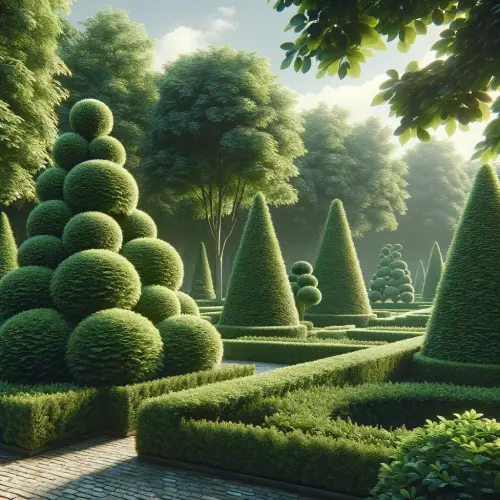The Sturdy Elegance of the Boxwood: A Landscape Classic

Classic Form and Versatility Boxwoods are celebrated for their lush, evergreen leaves, which are small, glossy, and range in color from deep green to variegated patterns of green and cream. Their ability to withstand frequent pruning and shaping makes them ideal for topiaries, hedges, and edgings. Gardeners and landscapers use boxwoods to create clean lines and define spaces in both traditional and contemporary garden settings. Historical Significance and Use With a history that dates back thousands of years, boxwoods have been a fixture in landscape design across many cultures. In Europe, during the Renaissance, they were integral to the formal gardens of the period, used to outline paths, borders, and intricate patterns. Today, their timeless appeal continues to make them a popular choice for adding structure and year-round interest to gardens. Cultivation and Care Boxwoods are relatively easy to grow and maintain. They prefer well-drained soil and can thrive in both sun and partial shade, although too much direct sunlight can scorch their leaves, and too much shade can reduce the density of their foliage. Watering needs are moderate, but they do require some moisture consistency to prevent the roots from drying out, especially in hotter climates. Pruning and Maintenance One of the key aspects of caring for boxwoods is regular pruning, which helps maintain their shape and promotes dense, lush growth. It's best to prune in late winter or early spring before new growth begins. Boxwoods are also susceptible to pests like leafminers and diseases such as boxwood blight, so ongoing monitoring and preventive care are essential to keep these plants healthy. Landscape Uses In the landscape, boxwoods are incredibly versatile. They can be used as standalone specimens, particularly when sculpted into topiary forms, or planted in rows to create hedges that add privacy and structure to garden spaces. Smaller varieties may be used in container gardening, suitable for patios or terraces, where their formal appearance can complement more casual plantings.
Contact us
Contact email: contact@stlukesprecinct.com